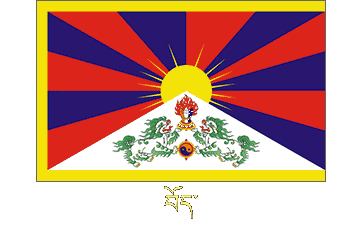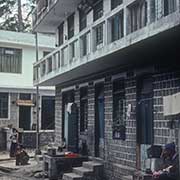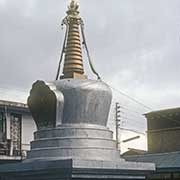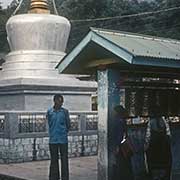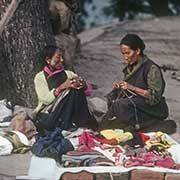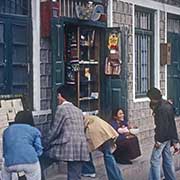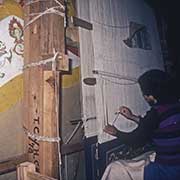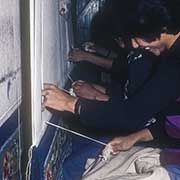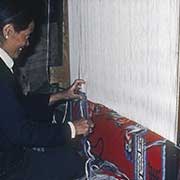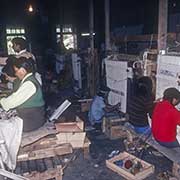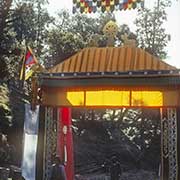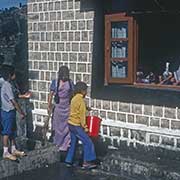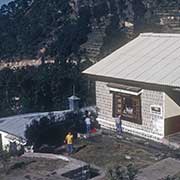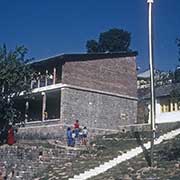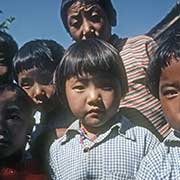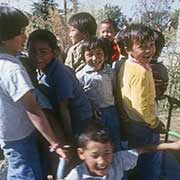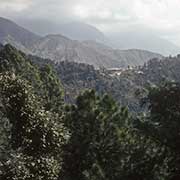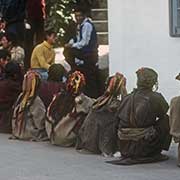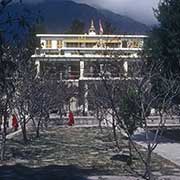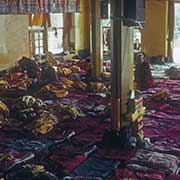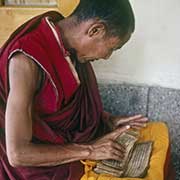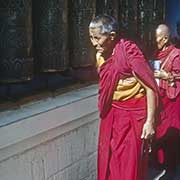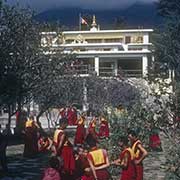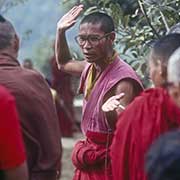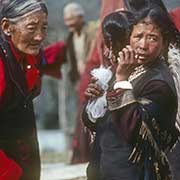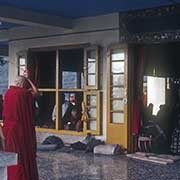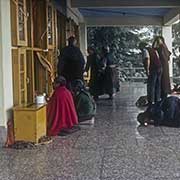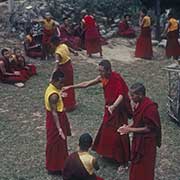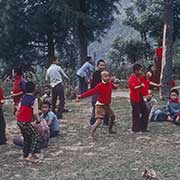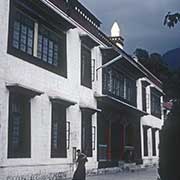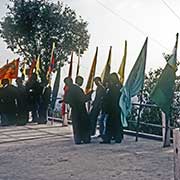Photos of the Dalai Lama’s Residence in Dharmshala, India, Tibet
The Dalai Lama’s Residence in Dharmshala, India
On the night of 18 March 1959, when the Tibetan uprising against the Chinese annexation of their country had started, Tenzin Gyatso, the 14th Dalai Lama, secretly left the Potala and slipped out of Lhasa with his family and a small number of government officials. It had become too dangerous to remain as there were strong indications the Chinese were planning to abduct him. Protected by Kham rebels, he slipped over the Indian border on 31 March 1959. He was granted political asylum and, after a year staying in Mussoorie, in May 1960, he settled in McLeod Ganj, a suburb of Dharamshala (Dharmsala) in Himachal Pradesh, northwestern India. The Tibetan Government in Exile was allowed to set up its headquarters here.
you may then send it as a postcard if you wish.
McLeod Ganj, at an average 2,082 metres altitude, is also known as “Little Lhasa” or “Dhasa”, with the Central Tibetan Administration and a significant population of Tibetans. The Namgyal Monastery (Namgyal Tantric College), with its Tsuglagkhang temple, is the personal monastery of the 14th Dalai Lama; its vital role is to assist with rituals involving the Dalai Lama. It functions as the red section at the top of the Potala Palace in Lhasa, where traditionally, those rites took place. The Namgyal in Dharamshala has nearly 200 monks (up from 55 in 1959), representing all four main Tibetan monastic lineages. They can be observed debating in front of the Tsuglagkhang temple at the Namgyal complex. The Library of Tibetan Works and Archives is one of the most important institutions for Tibetology; it was opened by the Dalai Lama in 1970.
In June 1959, a Buddhist monk, Palden Gyatso, was arrested for demonstrating during the March uprising by Chinese officials. He spent the next 33 years in Chinese prisons and “laogai” or “reform through labour” camps, the most extended term of any Tibetan political prisoner. He was forced to participate in brutal re-education classes. He was tortured by various methods, which included being beaten with a club ridden with nails, shocked by an electric probe, which scarred his tongue and caused his teeth to fall out, whipped while being forced to pull an iron plough, and starved, leading to irreversible physical damage. Released in 1992, he escaped to Dharamshala and became an internationally acclaimed activist for the Tibetan independence cause.
The Tibetan Youth Congress, an international non-governmental organisation that advocates the independence of Tibet from China, was founded on 7 October 1970 in Dharamshala. It has around 30,000 members in the Tibetan diaspora and is the largest pro-independence organisation of Tibetan exiles, with 87 branches in 10 countries. However, the Central Tibetan Administration has proposed the “Umaylam” (Middle Way) Approach under the Tibetan leadership and His Holiness the Dalai Lama to persist in seeking a peaceful solution through dialogue, bearing in mind both Tibetan and Chinese interests. It implies not seeking independence but genuine autonomy within the framework of the People’s Republic of China. The Dalai Lama was awarded the Nobel Peace Prize for advocating peaceful solutions based upon tolerance and mutual respect in order to preserve the historical and cultural heritage of the Tibetan people. But China remains uncompromisingly hostile to any dialogue, labelling the Dalai Lama a “splittist” and a “wolf in monk’s clothing” who wants to split Tibet from the “motherland”; and, of course, the TYC that does advocate independence is called a terrorist organisation by the Chinese.
The main facility of the Tibetan Children’s Villages (TCV) is at Dharamshala; between 1964 and 2006, the TCV was presided over by Jetsun Pema, a sister of the 14th Dalai Lama. There are workshops where, among other things, women weave carpets and perpetuate the skills unique to Tibet. The primary and secondary schools educate young Tibetans, making sure their language and culture are not forgotten.
